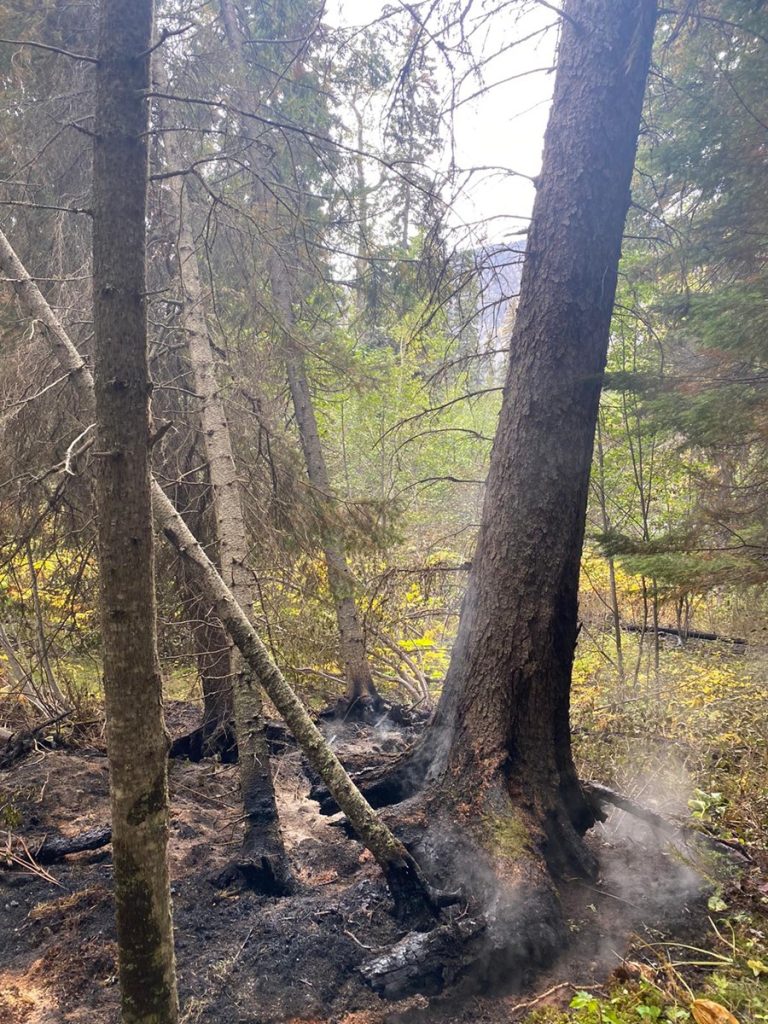Between Sept. 16 and Sept. 17, 2022, the Battleship Mountain wildfire received between 10 and 30 millimetres of rain. The precipitation, cooler temperatures and increased humidity has reduced wildfire behaviour, however, the wildfire remains Out of Control.
In the Peace region and on the Battleship Mountain wildfire, spruce trees are a common fuel type. Spruce trees are conifers, with low lying branches which contain large amounts of sap. Trees with low lying branches are easily ignited by ground fires. The lower branches act as a ladder, moving the fire from the surface up into the tree canopy. Additionally, the sap in the branches is flammable, making the trees ignite easily and burn quickly, in turn supporting fast-moving wildfires.
Spruce trees also have a very shallow root collar which does not adhere well to the soils when the duff layer is burnt away. The duff layer is made up of partially and fully decomposed organic materials lying below the litter on the forest floor and immediately above the mineral soil. When the duff layer, root systems and tree trunks get burnt through, they create hazardous environments for people, animals and infrastructure.
These dangerous trees are a concern because they can fall over without warning. Trees that look sturdy with minimal damage on the outside may be burnt through on their interior. It only takes a light wind gust for the trees to get blown over, damaging or crushing whatever is in their path below. The fallen trees can also create barriers on roads or eliminate access and egress routes all together.
In addition to the challenges presented by the fuel type, there are sustained drought conditions in the region. In areas with increased drought, all organic materials are easily consumed by fire. When the vegetation is burned, the remaining matter on the surface of the forest floor causes the soil to become hydrophobic and prone to erosion. During weather events with heavy precipitation, transportation routes can become washed out or swept over by mud.
On Sept. 17 2022, the evacuation orders implemented in regard to the Battleship Mountain wildfire were rescinded. Roadways will see increased traffic with residents returning home and crews and equipment continuing to commute to the worksite. Ongoing suppression or demobilization activities may also occur, further crowding the area.
Although the imminent threat of wildfire is gone, please be aware of other hazards which may be present. The Johnson Creek Forest Service Road remains closed in the interest of public safety.

